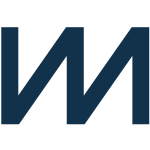About Close.io
Close.io is a CRM with built-in communication tools that can track and assess the communication between team members and leads. Close.io gauges team member performance by using a number of metrics, including how many calls they are making, how long those calls last and the value of those calls. It can also track the lead’s side of an interaction by logging actions taken by email recipients - both holistically and individually - like exactly who opened an email and when.
About ChartMogul
ChartMogul can turn new and existing business intelligence data into valuable analytics that companies can use to improve their market performance. ChartMogul can take subscriber data - both created within ChartMogul and imported from other data sources - and generate visualized analytics for a variety of metrics that SaaS companies care about.
Popular Use Cases
Bring all your Close.io data to Amazon Redshift
Load your Close.io data to Google BigQuery
ETL all your Close.io data to Snowflake
Move your Close.io data to MySQL
Bring all your ChartMogul data to Amazon Redshift
Load your ChartMogul data to Google BigQuery
ETL all your ChartMogul data to Snowflake
Move your ChartMogul data to MySQL
Close.io's End Points
Close.io Contacts
Request information about a contact that works for one of your leads, including the contact’s name, title, phone number, ID or email address. This data allows you to more closely track communications, both with individual contacts and with groups of contacts within a company.
Close.io Activities
Track all actions that are related to a lead, including emails, phone calls, notes and status changes. Then, retrieve data about those activities, such as the content of a note, the length of a call or the date and time that a status was changed. This information will give you a more detailed view of your team’s interactions with that lead.
Close.io Opportunities
Retrieve details surrounding a deal or potential deal, such as who the deal is with, the value of the deal, and its status (i.e. whether it is won, lost, or active). You can then more accurately project your business’ revenue and gauge the performance of team members involved with those opportunities.
Close.io Organizations
Get data about a subset of agents within your company, including the status of their deals, which team members belong to that organization and what their contact information is. Then, use this data to generate more detailed analytics on various segments of your team.
Close.io Custom Fields
Create custom Close.io fields that track data in ways that are more useful to your company. For example, create a custom list of categories to sort your leads by and use those fields to perform lead searches that are more relevant to the specific interests of your company.
ChartMogul's End Points
ChartMogul Plans
Gather data about your subscription plans - like the subscription IDs, names, billing intervals, and the number of intervals that are charged at once - to evaluate the performance of each plan. This will help you better understand the effectiveness of your plans so that you can determine which ones are more or less successful as a whole.
ChartMogul Customers
Create, retrieve, or update data for new or imported customers in ChartMogul. This allows you to see important customer contact details, customer IDs, and valuable performance data including a customer’s MRR, ARR, and industry sector. You can then use that data to better segment your customers, which can provide more accurate and specific information about your business performance.
ChartMogul Invoices
Import invoice data for customers that you are tracking through ChartMogul, including customer IDs, dates of purchase, transactions, and any relevant line items. Then, use ChartMogul to create subscription data for those customers and use that data to track more specific revenue data, both in ChartMogul and in your other data sources.
ChartMogul Transactions
Track payments or refunds made on an invoice to see the transaction ID, type of transaction, transaction date, and whether or not the transaction was successful. This can help you get more accurate analytics from your invoice data. It can also indicate when there is an unusually high number of refunds, which could signal a problem worth addressing.
ChartMogul Subscriptions
Get a list of subscriptions that ChartMogul has automatically generated from invoice data. This endpoint returns several IDs - including subscription IDs, customer IDs, plan IDs, and data source IDs - that will help you to more easily track and integrate data between any of those parameters to create deeper, more accurate business analytics.
ChartMogul Tags
Use tags to track terms that are associated with a customer so that you can segment or monitor them more specifically. For example, you could tag a particular customer as “high priority,” “returning” or anything else that is relevant to your business, and then retrieve a list of customers who have been tagged with those attributes in order to analyze them as a segment.
ChartMogul Custom Attributes
Update customer data with ChartMogul custom attributes that are more specific to the needs of your company. This can include both tags as well as more complex custom attributes. Then, track those attributes in ChartMogul to get analytics that are focused on your particular business concerns.








